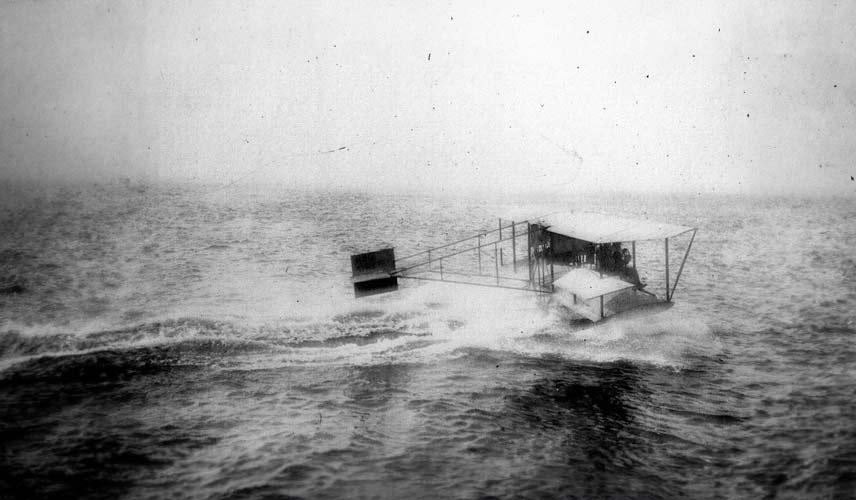A deep dive into the Curtiss A-1 Triad (Model E), exploring its historic roots, design intricacies, performance capabilities, and military applications during its operational tenure.
The Curtiss A-1 Triad (Model E), recognized as the U.S. Navy’s first aircraft, showcases the ambitions and aspirations of early aviation. This article elucidates its development history, unique design, performance traits, and military utility. The epoch of the early 20th century marked an era of relentless quest to dominate the skies. Among the pantheon of early aviation pioneers, the Curtiss A-1 Triad (Model E) emerges as a symbol of innovation, laying down the blueprint for naval aviation.
History of the development of the Curtiss A-1 Triad (Model E)
Amid the golden age of aviation, Glenn Curtiss, a revered figure in aviation history, perceived the potential of aircraft operating from water. His endeavors sought to merge the domains of air and sea, creating an amalgamated aircraft that could operate from both terrains.
The Curtiss A-1 Triad, aptly named for its threefold operability – in the air, on water, and on land, was conceived. The Model E, as it was also known, was a response to the budding requirements of the U.S. Navy, which began to see the strategic advantages of aerial assets.
Launched in the early 1910s, its inaugural flight took place in 1911, setting the precedent for what naval aviation could achieve. As for a NATO nickname, this is inapplicable as the NATO naming conventions are a post-World War II phenomenon, and the Triad predates this.
Design of the Curtiss A-1 Triad (Model E)
At its essence, the Triad was a biplane with a signature feature: its central float, flanked by retractable wheels, enabling operations from both water and land. With a wingspan of approximately 37 feet (about 11.3 meters) and a length of 29 feet (approximately 8.8 meters), it was compact yet versatile.
The design’s prime advantage was undoubtedly its amphibious nature. This not only showcased Curtiss’ innovative prowess but also provided unparalleled strategic flexibility. However, like many designs of its era, the Triad faced drawbacks. Its rudimentary controls, limited payload capacity, and vulnerability to environmental conditions were palpable challenges.
Yet, its hybrid design ethos laid the foundation for subsequent naval aircraft, highlighting its pivotal role in aviation evolution.

Performance of the Curtiss A-1 Triad (Model E)
Powered by an OX-5 engine that delivered around 75 hp (56 kW), the Triad’s performance was modest yet groundbreaking for its era. Achieving speeds close to 60 mph (approximately 97 km/h), with a service ceiling nearing 5,000 feet (around 1,525 meters), it was well-equipped for reconnaissance and basic naval duties.
Compared to contemporaneous aircraft, the Triad offered a distinct advantage with its amphibious capabilities. While not the fastest or the most agile, its unique operational flexibility rendered it unparalleled in specific naval applications.
Military use and combat of the Curtiss A-1 Triad (Model E)
The U.S. Navy’s acquisition of the Triad marked the inception of naval aviation. Primarily deployed for reconnaissance, it served as the eyes of the fleet, offering invaluable aerial perspectives.
Its armament was limited, reflecting the infancy of military aviation. The Triad’s principal strength lay in its scouting capabilities rather than offensive power. While its combat record remains modest, its strategic importance in naval operations was unmistakable.
Facing competition from other early aircraft, the Triad’s amphibious edge often set it apart. Though primarily in service with the U.S. Navy, its influence spanned globally, inspiring similar designs. As aviation progressed, the Triad was inevitably overshadowed by more advanced aircraft, phasing out its operational role by the late 1910s.
The Curtiss A-1 Triad (Model E) stands as a testament to early aviation’s audacious spirit, marrying the realms of air and sea. While its operational tenure was limited, its impact on naval aviation is indelible. In the annals of aviation history, the Triad rightfully claims its niche as an emblem of innovation and aspiration.
Back to the experimental aircraft section.